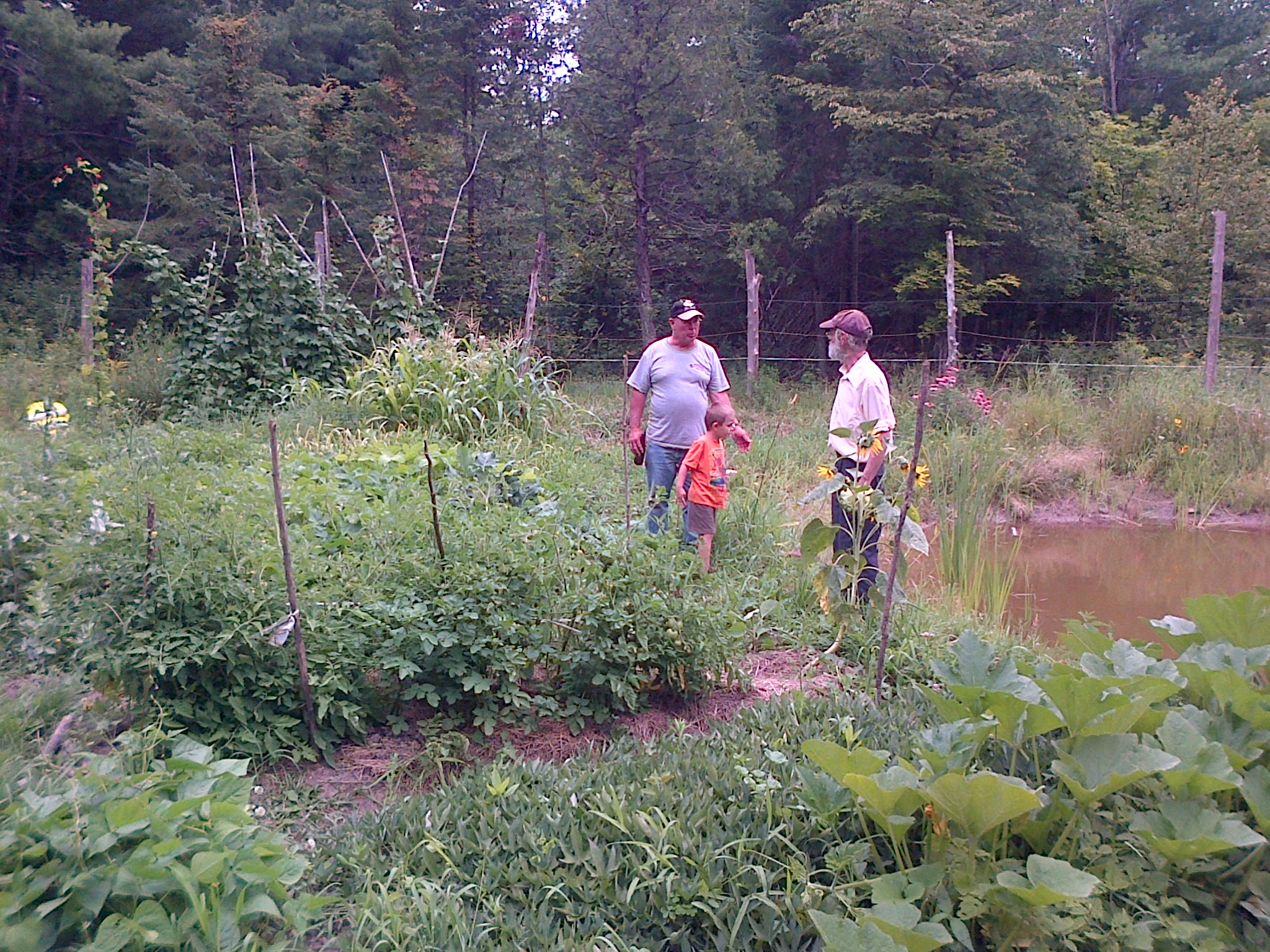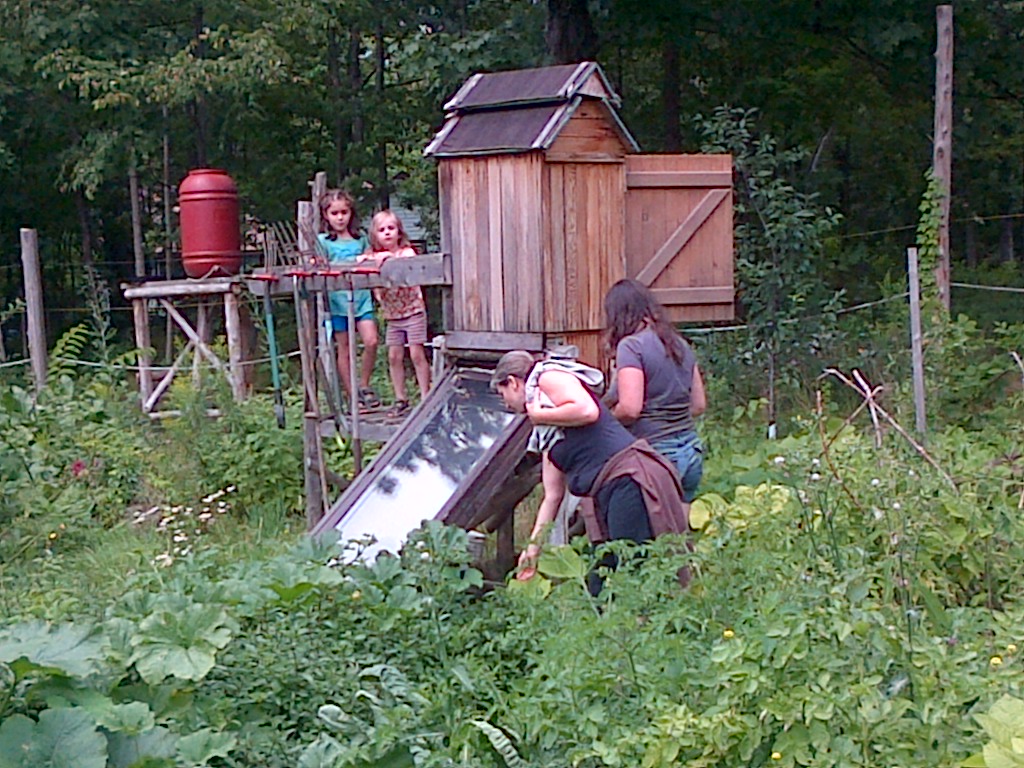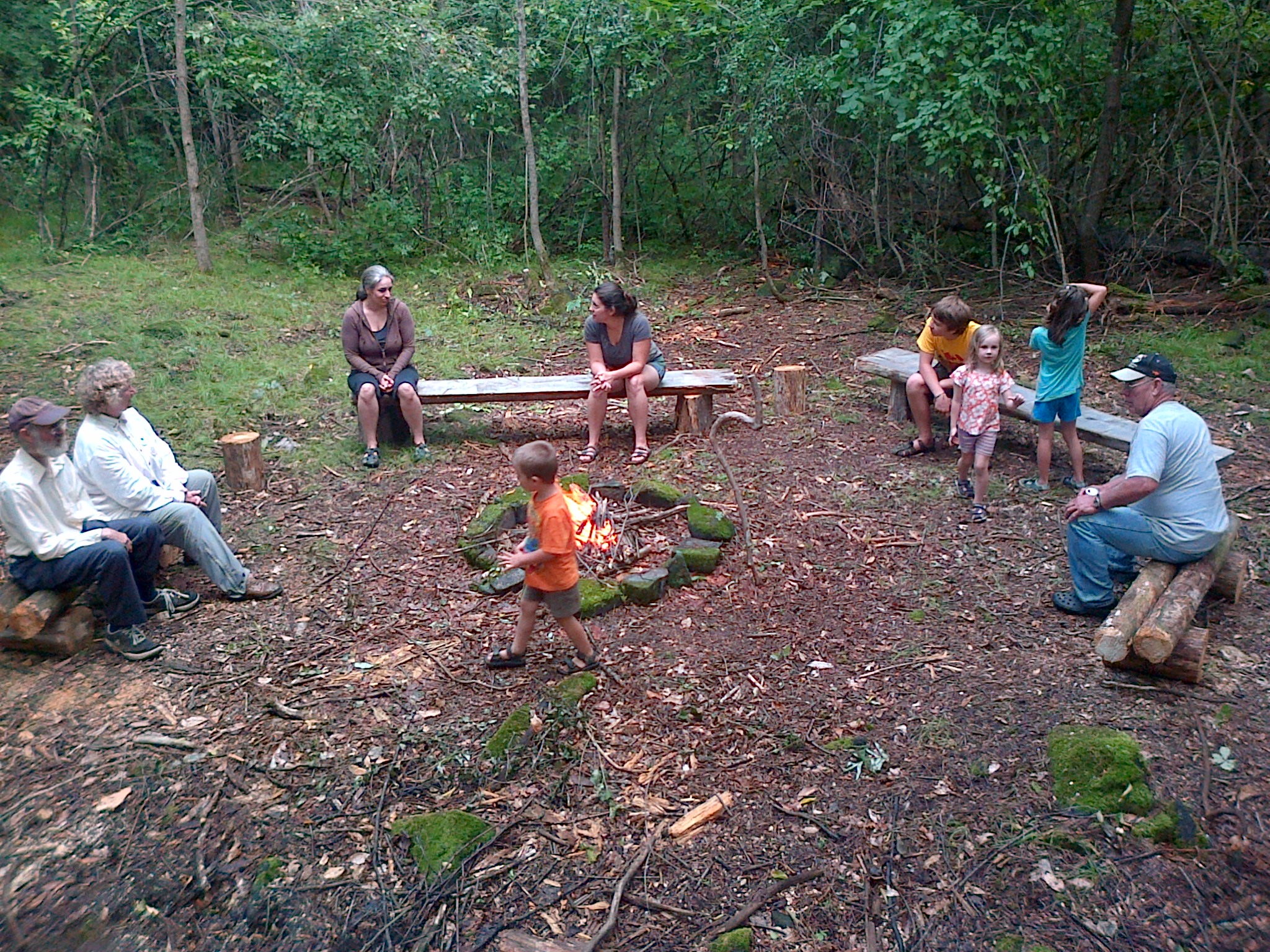Pictures from Lanark Eco-Village 1
Its hard to catch the essence of the Lanark Eco-Village project. As Rebecca Solnit said:
"You don’t stop walking because there is no way forward. Of course there is no way. You walk the path into being, you make the way, and if you do it well, others can follow the route."
We have made some progress on the path.
At the top of this page you can see some of the key structures. From left to right: the house, a storage shed, the woodworking shop inside, and out, and the nearby Clyde River.
The gardens could take up this whole collage:

We made a little lean-to greenhouse to start plants in:
And a campground for visitors who want to tent:
The above was from a Permaculture introduction course. I wish I'd taken the shot before the red and orange tents were taken down. The extra colour would have been nice.
There is lots of colour in the fall. Here is some with the Garden gate and in the background, the solar food dryer:
The dryer close up:

And some details:
Most recently, for a Children's Camp and ongoing use, we set up a campfire circle"

And an outdoor cooking facility:
To the left of the grill, the base for the bake oven rises up to support the bake oven.
Which now awaits next spring for insulation and a masonry cover.
There is another season, which lends itself to indoor activities:
Note the garden pond after a partial thaw:
Just as last last winter started (November 2012), we compleated our state of the art humanure compooster:
Full cycle nutrient management is the key to securing long-term soil fertility. The principle is explained in video #5 Pattern Integrity on the 7th Generation Initiative's video page. That story, along with #4, Most of Life is a Gas, are the stories of this place.
A full explanation of the safe management of humanure is given in The Humanure Handbook.
____________________
Its a start. There is much more to do. If you are so inclined, join us in bringing the Lanark Eco-Village into being.
In cold climates, it has long been the custom to build homes with a heating system. A home without such a system would be seen as incomplete. I'm suspecting, as transport fuels become expensive in the years to come, that a home built without a food supply will be considered incomplete. Such domestic ecosystems can be built for individual homes, for villages, or perhaps even cities.
There is much we can create.